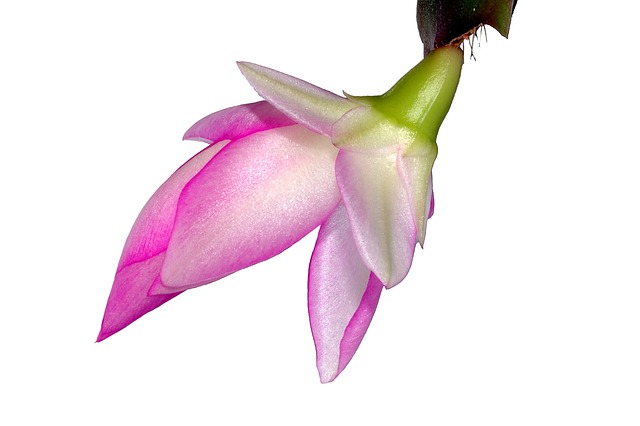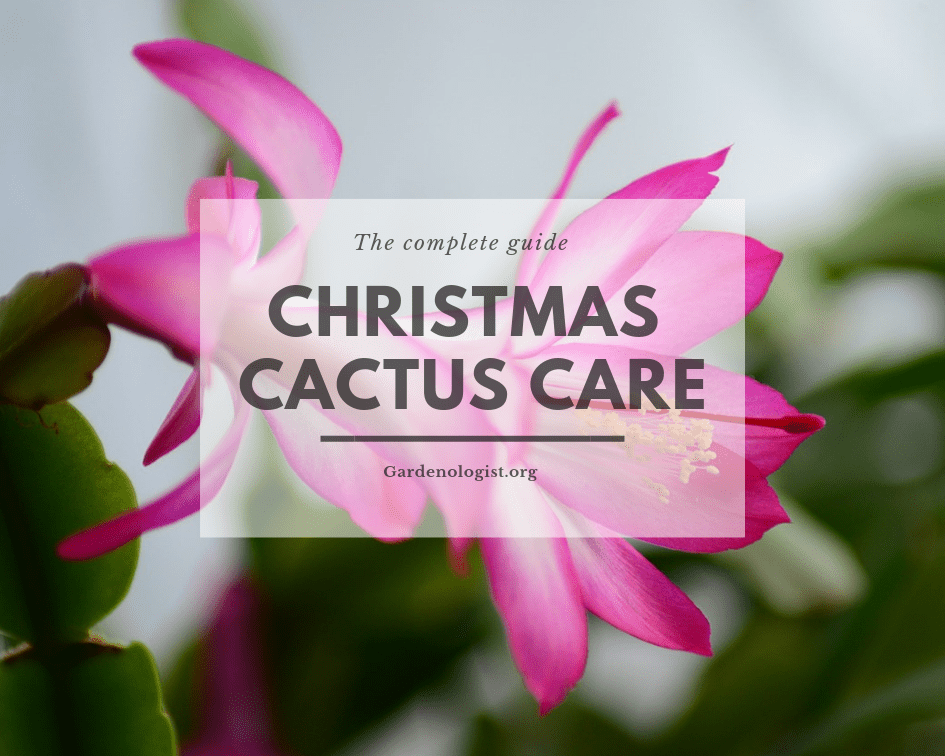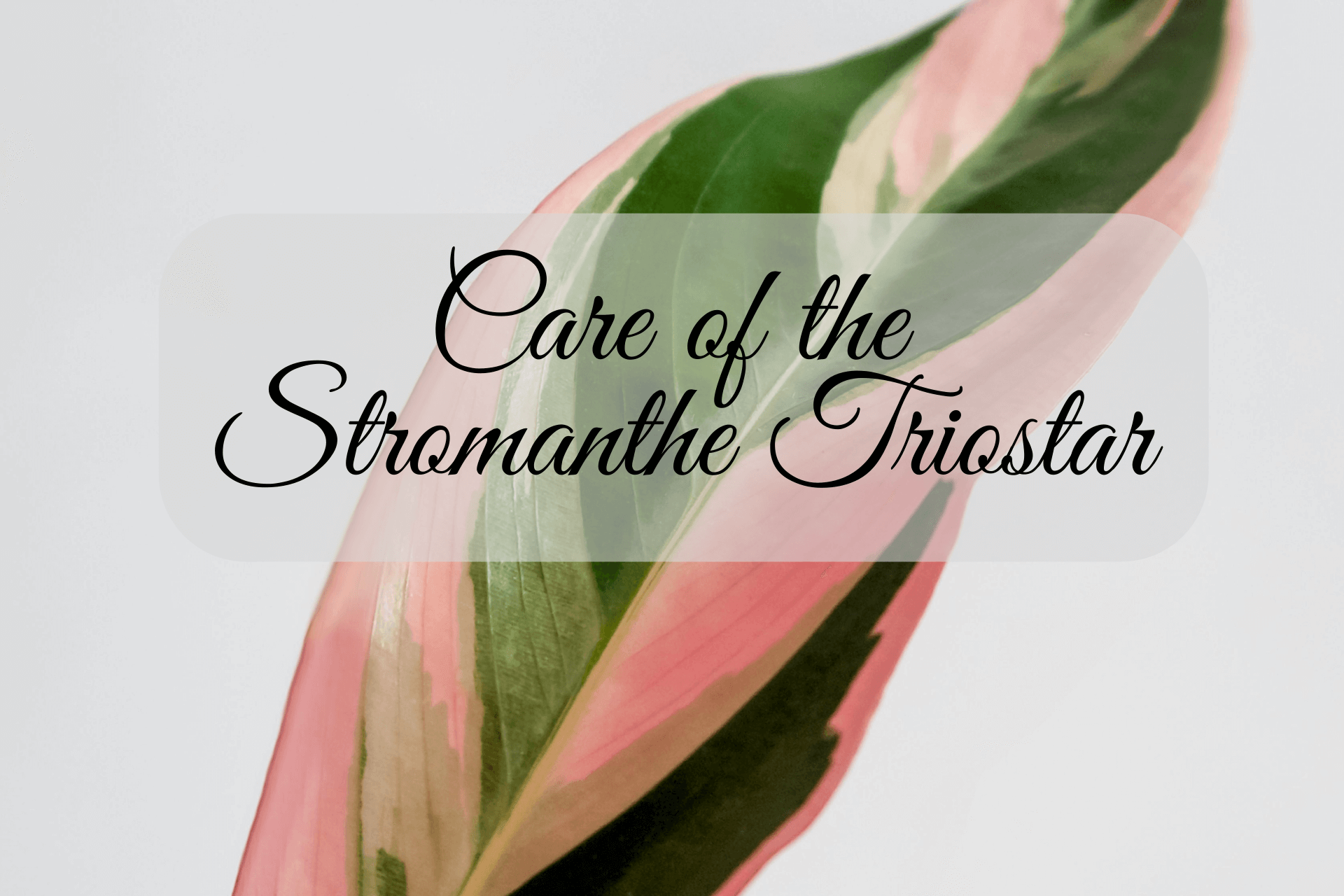This post may contain affiliate links. As an Amazon Associate we earn from qualifying purchases.
More than 170 years ago, William Buckley of the Rollisson Nurseries in England, debuted his hybrid, the Christmas cactus (Schlumbergera x buckleyi). A handful of clones of the original are still in existence today, according to renowned cactus expert Paul Brunelle.
Brunelle claims to have once had a 4-foot “diameter, perhaps 30-year-old plant which often produced about 800 blooms between November and May.”
The Christmas cactus does have the typical cactus succulent leaves but it differs from other cacti in that its branches aren’t upright and stiff but hanging. It’s the show-stopping, fuchsia-like flowers, however, that make the Christmas cactus such a popular houseplant.
The Christmas cactus blooms more the older it gets and it’s not uncommon to own a 30-year old plant like Brunelle’s. How long yours will live, however, depends on the level of Christmas cactus care you provide.
What you’ll need to care for a Christmas cactus
- Coarse compost
- Aquarium gravel or perlite
- Fertilizer
- Humidity source

We all came from somewhere
Understanding a plant’s natural environment and growing habit helps you to provide it with the proper care.
The Christmas cactus hails from tropical jungles in Central and South America where it grows as an epiphyte on trees (a plant that, although it grows on other plants, it’s not parasitic).
With no soil and without gaining sustenance from its “host,” the Christmas cactus derives nourishment from the air, rain and a number of other methods.
Care requirements are very like those of orchids, rather than how you would care for the typical desert-derived cacti.

How much light does a Christmas cactus need?
One of the kindest things you can do for your Christmas cactus is to place it outdoors when the weather turns nice. Never place the plant in direct sun, rather mimic its natural environment by placing it under a tree where it will receive dappled sunlight.
Bring it back indoors before fall’s first frost. Then, keep it near a window that gets lots of light, but not direct sunlight.
Keep the temperature no lower than 65 degrees Fahrenheit and no warmer than 80 degrees, except in September and October when you’ll be moving the plant to an area that remains close to 50 degrees and remains dark at night (see How to get a Christmas cactus to bloom, below).
Christmas cactus soil
Remember, Christmas cactus is a tropical plant, so it requires more moisture than a desert cactus does. It is also prone to root rot (no soil back home, remember?) so plant it in in a fast-draining medium such as three parts of coarse compost blended with 1 part of small aquarium gravel (the ideal size, here at Amazon.com) or perlite.
Please ignore advice to add peat moss to this mixture. It may NOT “aerate” the soil (that’s the job of the gravel or perlite). It must remain wet or it will repel water and, eventually it will squeeze the air out of the potting mix.
Watering & humidity for the Christmas cactus
Allow the top 1 inch of soil to dry before watering the Christmas cactus. When you do water, drench the soil until water drains from the bottom of the pot. Wait until the pot has completely drained before setting the Christmas cactus pot back on the tray.
As we get closer to winter (around mid-Autumn), allow the soil to dry a bit more before watering.
Humidity is another important factor to consider in Christmas cactus care. The pros at Ed Hume Seeds claim that the plant requires 50 to 60 percent humidity, which is challenging to provide in the home environment.
They suggest placing a vase or tray of water near the plant. “As the water evaporates it will provide the humidity the cactus needs. Other ways to provide moisture to the air around the plant is to place it in a group of other house plants, place it near a room humidifier or on a humidity tray.
This is, simply, a plate or shallow tray filled with pebbles. Add water until it covers all but the top layer of pebbles (those must remain dry). Place the pot on the dry pebbles and replenish the water in the tray as it evaporates.
How to fertilize the Christmas cactus
Fertilizer won’t force your Christmas cactus to bloom, but it may enhance its growth. Wait until early November (before the plant flowers) to apply a water-soluble 0-10-10 liquid fertilizer, at the rate suggested on the label.
Don’t fertilize again until February. Then, in spring and summer (up until September), use an all-purpose houseplant fertilizer. The pros at Hume Seeds recommend that the nitrogen ratio (the first number in the fertilizer ratio) be no higher than 10 percent. For example, choose 10-10-10, 5-10-5 or 10-20-10.
We use Schultz All Purpose Plant Food (10-15-10). It’s concentrated, however, so read the instructions carefully.

How to get a Christmas cactus to bloom
If you have a greenhouse, getting your Christmas cactus to bloom during the holidays is no problem. The rest of us will have to carefully regulate temperature and light levels.
In September, place the plant in a room where you can carefully control the amount of light it gets. The experts at Chicago Botanic Garden recommend covering the Christmas cactus with a black cloth or placing it in a closet that is never opened in the evening.
- Give the Christmas cactus bright but indirect light during most of the day and at least 13 hours of total darkness (no light whatsoever, even for a few minutes) each day/night if the room temperature is between 55- and 70-degrees F. If it is warmer, provide 15 hours of darkness.
- Cut back to watering only half of what you normally provide.
- Continue these conditions until the end of October.
- In November, fertilize the Christmas cactus as we previously mentioned: apply a water-soluble 0-10-10 liquid fertilizer, at the rate suggested on the label. Lilly Miller’s Alaska Morbloom is excellent, and sold by the gallon at Amazon.com.
- When the plant buds, begin watering more often, but don’t increase “the volume of water used. Too much water may cause buds to fall” according to the experts at Chicago Botanic garden.
- Move the pot as little and as carefully as possible while the plant bears buds.
- While it’s in bloom, resume a normal watering and fertilization schedule.
After bloom, allow the Christmas cactus an 8-week resting period. Keep in an area with cool temperatures (50 degrees F if possible) and water very little (only enough to keep it from dying).
Christmas cactus problems
Bud-drop is the most common complaint we hear from Christmas cactus growers. This is caused by anything from jerking the plant while you move it to overwatering and lack of humidity.
If your Christmas cactus appears to be wilting, back off on watering frequency. It’s prone to root rot and too much water will cause that. Soil that doesn’t drain well may also cause root rot.
Check your plant’s symptoms against those listed under “Diseases” at the UMASS Amherst website to determine which fungal pathogen or bacteria is attacking the Christmas cactus, and use the fungicide suggested.
It’s a good idea to repot the plant every year after its resting period. Sterilize the pot in which it has been growing and use fresh potting mix. Learn how to sterilize planting pots here.
We show you how to propagate your Christmas cactus, here.
Mention of a fertilizer or pesticide, or use of a pesticide or fertilizer label, is for educational purposes only. Always follow the product’s label directions attached to the container you are using. Be sure that the plant you wish to treat is listed on the label of the pesticide you intend to use. And observe the number of days between pesticide application and when you can harvest your crop.




